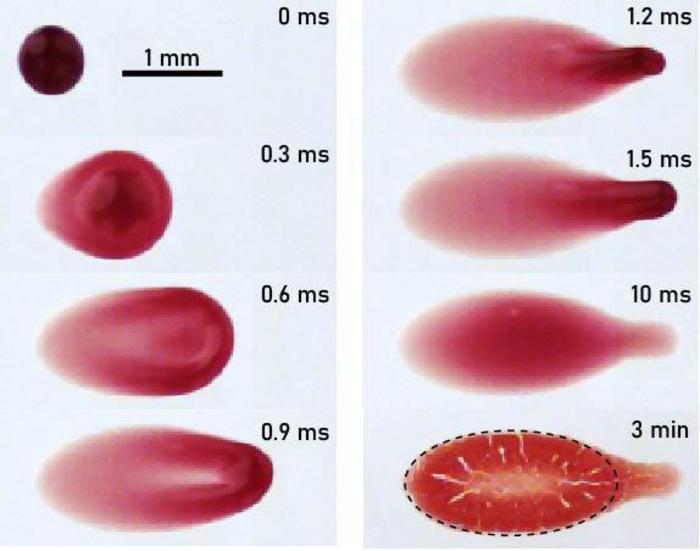WASHINGTON, Nov. 21, 2023 – Forensic science has captured the public imagination by storm, as the profusion of “true crime” media in the last decade or so suggests. By now, most of us know that evidence left at a crime scene, such as blood, can often reveal information that is key to investigating and understanding the circumstances around a crime — and that scientific methods can help interpret that information.

Credit: James C. Bird
WASHINGTON, Nov. 21, 2023 – Forensic science has captured the public imagination by storm, as the profusion of “true crime” media in the last decade or so suggests. By now, most of us know that evidence left at a crime scene, such as blood, can often reveal information that is key to investigating and understanding the circumstances around a crime — and that scientific methods can help interpret that information.
In Physics of Fluids, by AIP Publishing, a group of scientists from Boston University and the University of Utah demonstrated how bloodstains can yield even more valuable details than what is typically gathered by detectives, forensic scientists, and crime scene investigators. By examining the protrusions that deviate from the boundaries of otherwise elliptical bloodstains, the researchers studied how these “tails” are formed.
“These protrusions are typically only used to get a sense of the direction that the drop traveled, but are otherwise neglected,” said author James Bird.
In fact, previous studies have primarily focused on larger blood drops falling vertically on flat surfaces or on inclined surfaces where gravity can reshape and obscure the tails. By contrast, the new study involved a series of high-speed experiments with human blood droplets with diameters of less than a millimeter impacting horizontal surfaces at various angles.
“We show that the precise flow that determines the tail length differs from the flow responsible for the size and shape of the elliptical portion of the stain,” said Bird. “In other words, the tail lengths encompass additional independent information that can help analysts reconstruct where the blood drop actually came from.”
Indeed, the tail length can reflect information about the size, impact speed, and impact angle of the blood drop that formed the stain. When measured for several blood stains in a stain pattern, the trajectories of the drops can be backtracked to their presumed origin.
While their analysis employed only horizontal surfaces to examine impact velocity dynamics, Bird and his colleagues hope it triggers more studies that focus on the length of the tail in bloodstain patterns. They believe that incorporating tail length into standard bloodstain analyses will produce more robust evidentiary information.
“Knowing the origin of the blood stains at a crime scene can help detectives determine whether a victim was standing or sitting, or help corroborate or question a witness’s testimony,” said Bird.
###
The article “Bloodstain tails: Asymmetry aids reconstruction of oblique impact” is authored by Garam Lee, Daniel Attinger, Kenneth F. Martin, Samira Shiri, and James C. Bird. The article will appear in Physics of Fluids on Nov. 21, 2023 (DOI: 10.1063/5.0170124). After that date, it can be accessed at http://aip.scitation.org/doi/full/10.1063/5.0170124.
ABOUT THE JOURNAL
Physics of Fluids is devoted to the publication of original theoretical, computational, and experimental contributions to the dynamics of gases, liquids, and complex fluids. See https://aip.scitation.org/journal/phf.
###
Journal
Physics of Fluids
DOI
10.1063/5.0170124
Article Title
Bloodstain tails: Asymmetry aids reconstruction of oblique impact
Article Publication Date
21-Nov-2023




